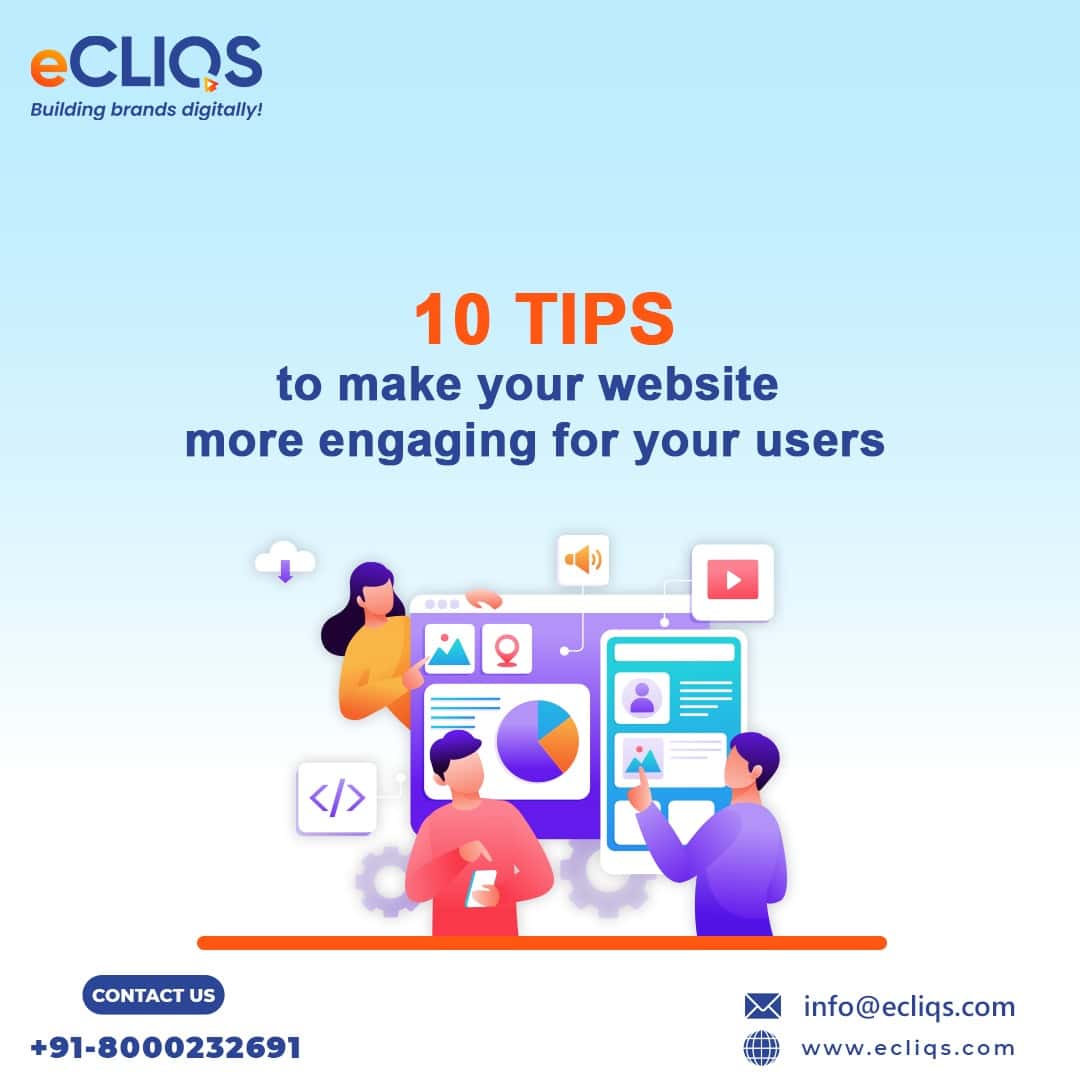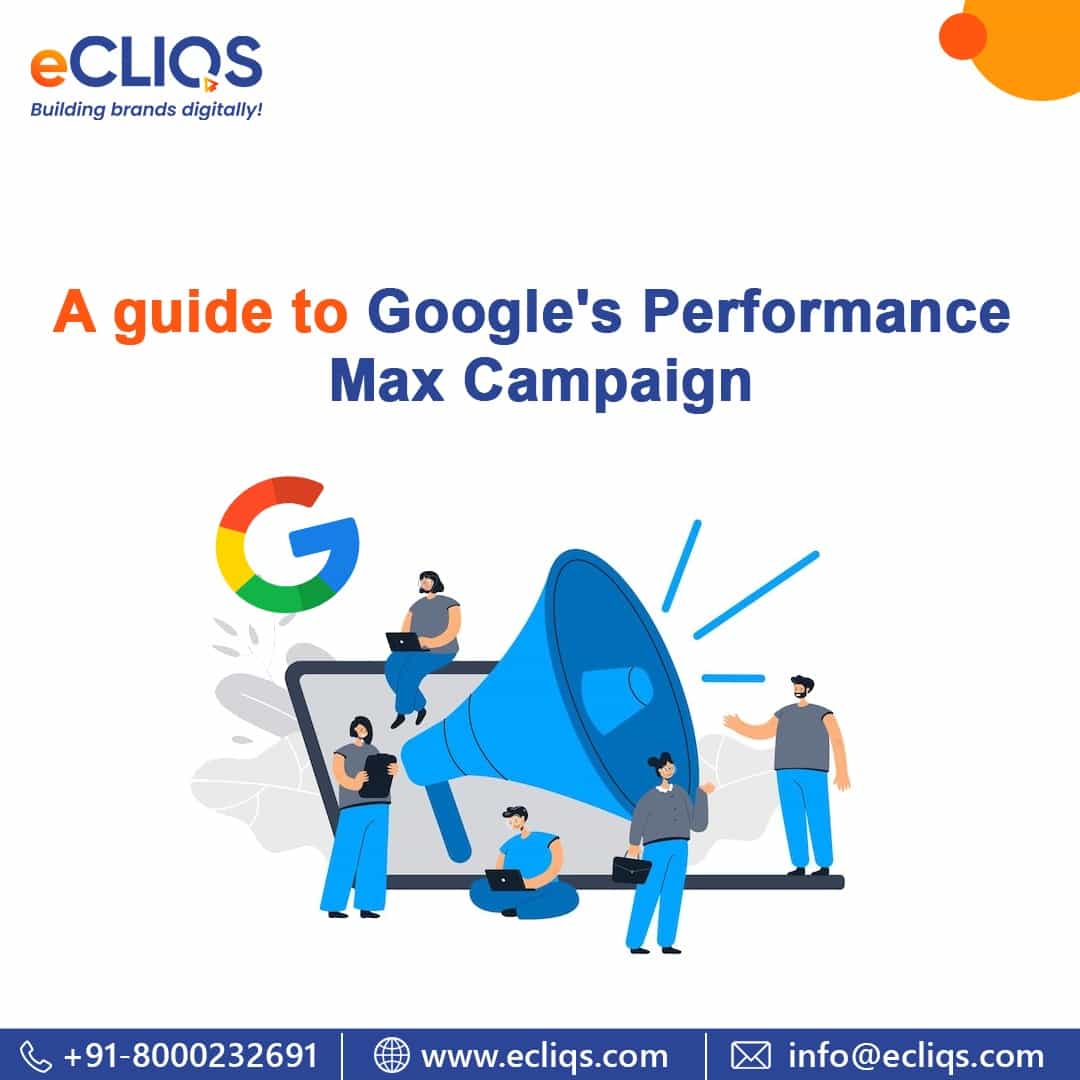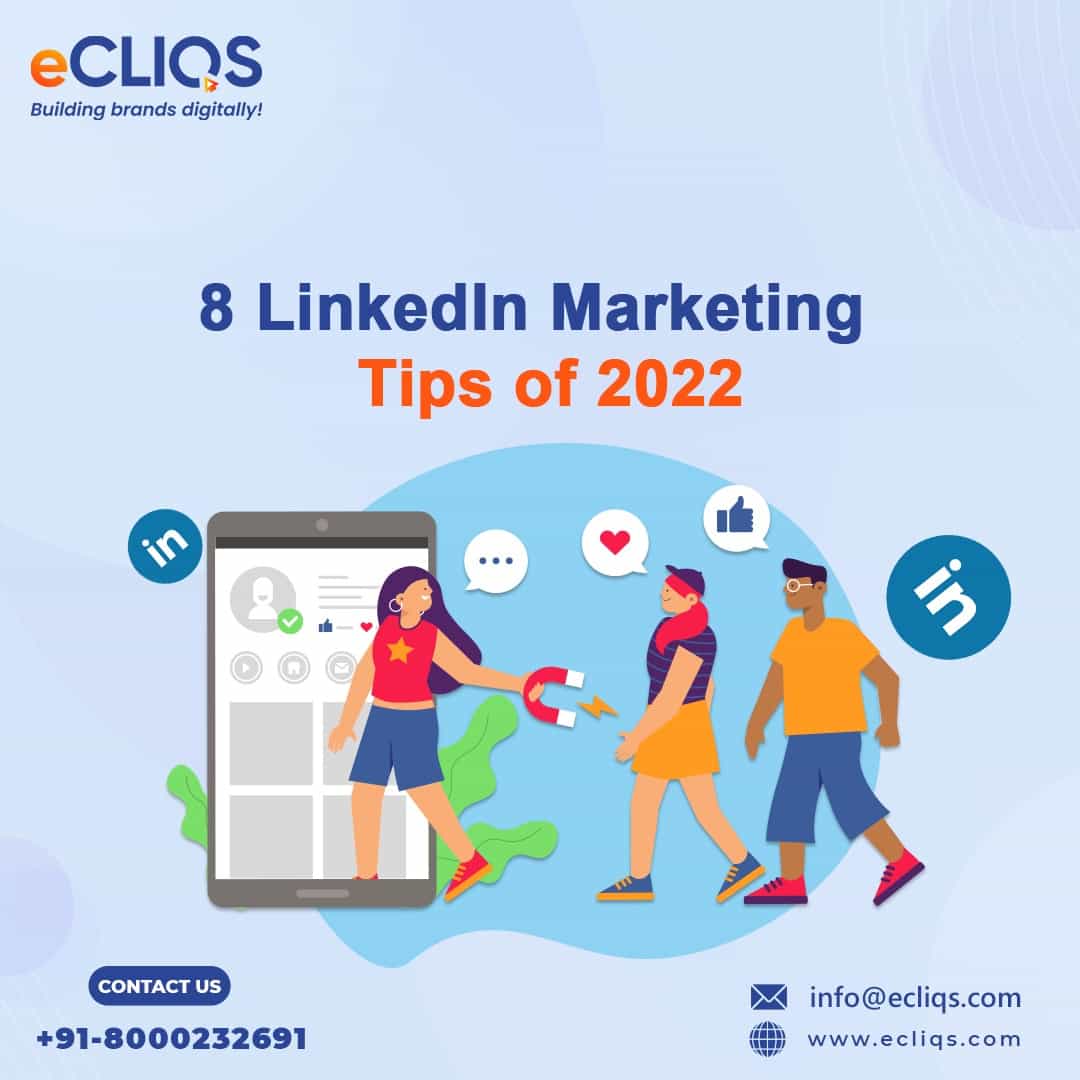10 Tips to Make Your Website More Engaging For Your Users
It’s crucial to make a good impression on people who check out your brand. The best way to proactively inspire them in the year 2022 is through a website. So, to make a long-lasting impression on visitors, you need to make your website more interesting.
Just keep in mind that the first three or four seconds of a user’s visit can determine whether or not they will become paying customers. It stands to reason that the more interesting and straightforward your website is to navigate, the more people will look it up. Simply put, a convincing and well-built design is the driving force behind the expansion of your company.
In order to succeed, you must understand what constitutes “maximum engagement” and how to increase this crucial website factor to increase your future leads and revenue.
What is User Engagement?
Simply put, user engagement occurs when site visitors enjoy your content enough to read it, take it in, and ultimately take action.
First and foremost, you’ll notice that when user engagement is high, your audience becomes more loyal. Because your website is so effective, more people will keep coming back.
Types of User Engagement
When it comes to websites, there are many different levels of interaction. Here are some:
- Reading & Absorbing Content
User engagement occurs when a visitor to your site lands on the homepage, reads the content, and then navigates to other pages within your site.
They’re doing research on your company and products.
The more knowledgeable your customer is, the more likely they are to make a purchase from you. That’s why it’s crucial to your success that you boost website engagement.
- Visitor Comments & Discussions
Users are actively engaged when they take part in your website’s interactive content. For example completing a quiz, voting in a poll, filling out a survey, chatting with a bot, etc.
These additions are not only fun for your visitors, but they also increase engagement and encourage them to return and tell their friends.
- Social Shares
Those who enjoy reading what you have to say on your blog may decide to “like” it on Facebook and share it with their friends. Simply clicking on your site’s social sharing buttons can increase interaction.
- Watching Videos & Viewing Images
Providing a media gallery page means there will be more content for visitors to peruse. Maximize the quality of all visual-oriented content, not just the images on your homepage; fuzzy or otherwise poor-quality imagery is unacceptable.
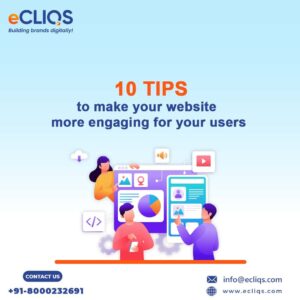
Now that you have an idea about user engagement and its types,
Here are 10 tips to make your website more engaging for the users.
1. Have a simple layout for your homepage
To make a user-friendly website, a basic layout of the homepage is a good place to begin.
Free and paid pre-built templates are available for use with website builders like WordPress
Picking and choosing elements from those designs and other sites can be the first step in crafting an interesting layout.
2. Mix up the layout
Numerous websites online use the same design for every page. Maintaining a consistent style is commendable; however, if you want your site to feel modern and inviting, consider refreshing the designs of the various folders in your navigation bar.
You may wish to have a different layout for your blog than you do for your products and services page. It will make your site visitors feel like they are exploring new content each time they visit..
3. Use white space
You shouldn’t be afraid of white space.
The notion that every blank space on a page must be filled can consume some people. Although appealing, this approach fails to deliver in terms of design effectiveness.
When a site is completely covered, it’s like walking into a crowded room. Visitors to a poorly organised website are in the same position as someone trying to clean a cluttered room: they have no idea where to begin.
White space on a website is effective because it draws the eye and guides the reader’s focus from one section to the next.
4. Choose colors strategically
There is a psychological impact of colour.
Certain associations are made between colours and the emotions they evoke. For this reason, the predominant colours of fast food establishments are red and yellow. Colors like those have been shown to stimulate appetite.
Blue is a soothing colour, which is why many online businesses and social media sites (like Facebook and Twitter) choose to use it.
Create an attractive website by carefully selecting your colour palette.
Distracting and off-putting colour combinations can discourage site visitors from exploring further. Use no more than three colours on your site, and make the third an accent.
The colours in your logo should serve as inspiration for your overall colour scheme. Make sure the colours on your website match the ones in your logo. One more colour is allowed if it’s black and white.
5. Use clean, easy-to-read fonts
The fonts you use should complement the tone and purpose of your website and brand. Confused about which typeface to use to attract readers to your website? Due to its clean readability, san-serif fonts are commonly used for the majority of a website’s standard content.
In general, serif fonts like Times New Roman are better for print, while sans-serif fonts like Arial and Roboto are better for digital reading. Serif fonts add a touch of sophistication to online titles and headers when used as contrast and accents.
Make sure the correct font size is used when posting on the web.
It is recommended that websites use at least a 16-point font size for body text, especially on mobile devices. If you go any smaller, your OS will automatically zoom in, making everything very small and unreadable. Labels and captions can be a point or two smaller, while headers should be the same size or a point or two larger.
- Fonts should be viewed on as many devices as possible to ensure optimal viewing.
- Depending on the typeface you use, the text size you enter will shift accordingly.
- Georgia and Courier New have different equivalent sizes for a 12-point font.
6. Make your site mobile-friendly
Develop a mobile-optimized version of your website. In today’s society, mobile phone usage is extremely common. According to Google, 70% of all internet use occurs on mobile devices, and users have high expectations that their favourite sites will render correctly on these devices.
Your site’s credibility will be assessed by how well it works on mobile devices. Users are much less likely to interact with a mobile site that is poorly designed. In fact, users are 52% less likely to interact with a business if they have a poor mobile experience(source:webfx).
This means that the more effort you put into making your site mobile-friendly, the longer visitors from mobile devices will stay.
7. Make it easy to navigate
Website design that succeeds has a distinct hierarchy that makes sense to users.
Your site’s menu must provide links to all of your pages. Popular websites usually use a pyramidal structure for their menus, where broad categories are listed first and then more narrow ones.
Your site will benefit from pyramid navigation because it will be easier for search engines to crawl through it, resulting in faster page indexing and a higher position in search results (which can lead to more visitors).
In addition, users will be able to quickly navigate to the information they need, which will boost your site’s engagement and give you more freedom in crafting an effective layout.
8. Make your contact details easy to find
Keep your information handy so that people can reach you. You could put them on a “about” page that visitors could access via the menu. Or you could put them in the footer at the bottom of your web pages, like many other sites do.
An easy-to-find contact page increases customer satisfaction and loyalty. On the other hand, people will become aggravated if they can’t get in touch with you when they need you to resolve a problem if they haven’t saved your contact information in a convenient location.
Verify that your contact details are correct and consistent across all of your online profiles (such as your Google Business Profile listing). Having consistent contact information across the web increases your authority.
9. Place social media plugins
Adding social media plugins to your site makes it more user-friendly and facilitates content sharing on various networks.
They’re a simple addition to your site that will greatly improve:
- Brand awareness
- Traffic to your site
- Presence on social media
- Natural backlinks
- Your site’s user experience
- Your brand’s engagement
Popular locations for social media plugins include the page’s top and bottom, immediately adjacent to and following the content, and in the sidebars.
10. Include clear CTAs
You should highlight each CTA on your page so that it stands out. In order to convert, CTAs are used.
Without clear calls to action (CTAs), visitors to your page are much less likely to take any action.
All calls to action (CTAs) must be prominently displayed. In addition, they need to be tailored to the specific needs of your sales funnel’s various segments. Use engaging, prompting language in your CTAs, and make it crystal clear what you want the reader to do in response to each.
Conclusion
Making a website that people want to spend time on from scratch is a lot of work. Therefore, we have provided the most effective means for making your website more user-friendly for your benefit. If you follow them, you will be successful in 2022 and beyond.
Your website will definitely benefit from using this checklist. It’s a long-term investment that will pay off in a slew of improvements to your web app’s speed and functionality. Further, if you implement these recommendations, your website will be ready for whatever the future may bring.
References
- https://www.crazyegg.com/blog/increase-user-engagement-website/
- https://blog.techliance.com/make-website-more-engaging/
- https://www.cleveroad.com/amp/blog/5-best-tips-and-tricks-to-increase-user-engagement-on-website/
- https://www.wix.com/blog/amp/2018/07/increase-website-user-engagement
- https://www.webfx.com/blog/web-design/user-experience-matters-marketing/
- https://www.blog.google/products/marketingplatform/analytics/mobile-challenge-and-how-measure-it/
Personal Branding – Why it’s important for entrepreneurs or business owners?
These days, “personal branding” is a well-known concept, and individuals often use it in the context of the marketing and commercial worlds. If you are someone who is taking the time to read this post, it is probably probable that you have been inundated with information on the concept of personal branding and the significance it has in the field of business. You may be under the impression that it is some kind of recent trend or that it is the product of the marketing gurus’ overactive imaginations. Personal branding, on the other hand, is not going anywhere and, if anything, will only become more powerful as time goes on. The question now is, what exactly is personal branding, and what makes it so important? Before that, let’s understand what is Personal Branding?
What is Personal Branding?
Personal branding refers to the purposeful and intentional efforts made to build and influence the public perception of a person or brand. This is accomplished by positioning the individual or brand as an expert in their field of work, boosting their credibility, and differentiating themselves from their rivals. The end result of these efforts is to advance the individual’s career, grow their circle of influence, and have a greater impact.
The phases involved in the process of personal branding are as follows: figuring out what sets you apart from others, building a reputation based on the characteristics that you like most in other people, and then making it possible for others to recognise you for those characteristics. In the end, the goal is to design something that not only conveys a message but also has the potential to be turned into a profitable business venture. Personal branding, on the other hand, views success as a kind of self-packaging, in contrast to certain methods to self-help that centre on self-improvement. Personal branding is a form of marketing.

Why Is Personal Branding Important?
The concept of personal branding refers to the process of building a brand around an individual rather than a company or other commercial enterprise. It is the most effective method for highlighting a person’s distinctive qualities, areas of expertise, and selling factors. The process involves exhibiting a person’s abilities, personality, experience, behaviour, and attitude in order to get recognition and establish oneself as a personal brand.
It is also known as charisma, and it is what enables someone to transform their name into a revolutionary brand. Gaining respect and acclaim as a well-known authority figure among peers in one’s field is a great way to propel one’s professional or commercial endeavours forward.
Professionals working in different industries can get huge benefits from personal branding. Personal branding not only creates awareness about them, but also helps build trust among their target customers.
What are the benefits of Personal Branding for entrepreneurs?
An individual’s personal and professional lives may both benefit from personal branding. Here are some of the reasons why personal branding is so essential for entrepreneurs or professionals running their own business
Helps build trust
Customers are more likely to do business with a person rather than a faceless organisation. A trustworthy reputation in the eyes of consumers may be cultivated via the use of personal brands. It’s a great way to introduce folks to the real you and show off everything you’ve got to offer.
People are more likely to support a company or buy a product from an individual they feel they know and like thanks to effective personal branding. It has the potential to enhance both corporate and consumer relationships. Connections with individuals all across the globe may benefit from this.
Helps to distinguish the business from others
Credibility and market differentiation may be increased via the use of personal branding. When people see themselves in you and put their faith in you, you get an edge over the competition.
It gives credence to both your expertise and your talents, contributing to the enhancement of the brand that your company has. By effectively showcasing your individuality via branding, you may set yourself apart from competitors in your field and grow your own personal brand.
Increases revenue of your business
Sales, profits, and expansion are all boosted when an individual takes charge of their own brand. Having this helps show that you are a knowledgeable expert in your field.
Provide new opportunities
If individuals in your field recognise you and your company, you’ll have an easier time securing new chances like business collaborations and agreements. People will buy from you because they can relate to you and your company.
Social media and personal branding
The impact of social media platforms like Facebook and Twitter has exploded into the business sector. You may find corporate or industry-specific networks like Slack, as well as more broad professional accounts like LinkedIn. Self-branding is helpful for landing a job or advancing in one’s field in this era of pervasive professional networks. For the sake of establishing user identities, social media has emerged as a rich online open source.
Colleagues may be networked on both a social and professional level via the establishment of a brand and an online presence within the context of internal business networks. Because more individuals are able to learn from more people, this form of engagement not only fosters creativity inside the firm but also helps employees create their personal brands in comparison to those of their coworkers.
Some social media platforms, such as Twitter, may be seen as more “‘professional’ environment with significant professional consequences” due to its flattened, all-encompassing audience, which may comprise both professional and personal relationships. Because of its open nature, Twitter may be used for either public or private purposes, depending on the user’s level of self-censorship.
In the context of personal branding, where “success is not decided by people’ internal sets of abilities, motivations, and interests but, rather, by how well they are branded,” the emphasis is on self-promotion rather than genuine self-expression. Self-promotion differs from self-expression in that the former is done on purpose in order to shape the individual’s image or identity, while the latter may occur as a result of promotion.
8 Tips for effective Personal Branding
You can give yourself an advantage over other applicants applying for the same business opportunity by highlighting key data such as the number of people who follow you on social media, the amount of traffic that your website receives, or other important metrics. This can help you stand out from the pool of available candidates. Imagine this as something like to an online portfolio that you have created about yourself. Building a name for oneself in the marketplace enables more people to get familiar with who you are and how you provide value.
If you want to enhance your personal brand, follow these steps.
1. Research and create your personal branding statement
At this point, you should define your audience and do an audit of any competitors that may exist for you.
2. Build a personal branding strategy
Prepare a strategy for engaging with your target audience, and determine the characteristics of success for you at intervals of two months, nine months, and two years from now.
3. Monitor your personal brand engagement
Encourage constructive engagement, and devise a response strategy for dealing with critical feedback.
4. Set an Objective for Your Personal Brand
You shouldn’t go into working on the development of your brand until you have some specific objectives in mind. In addition to being a reflection of the abilities you already possess, it also serves as a representation of the goals you have set for yourself. You may locate the niche in which you wish to picture yourself being successful by doing a SWOT analysis of yourself, which involves evaluating both your strengths and shortcomings.
5. Create a Brand Framework
You should begin working on the framework or strategy for your brand. You need to determine your brand’s narrative based on your target demographic and the level of experience you possess. To discover an efficient foundation for your brand, you will need time, effort, and an awareness of your own personality. Determine which of your many strengths are most important to the success of the task you perform. The only way to get your customers to listen to you is to demonstrate how they will profit from working with you and your expertise.
6. Develop your personal brand
Your goal should be to spread awareness of your personal brand via the use of social media, networking, outreach, and chances to speak. You should think about blogging, vBlogging, podcasting, and any other methods that you might use to market your personal brand in a manner that will allow your audience to digest the information rapidly.
7. Have a communication plan
Since it can be time-consuming to control your presence online, this strategy will assist you in dealing with unfavourable feedback and make it simpler for you to deliver information to partners with whom you will collaborate in the future.
8. Measure your success regularly
Establish some key performance indicators (KPIs) for the success of your personal brand so that you can evaluate whether or not you are moving in the correct way. Even the smallest victories ought to be celebrated in order to keep oneself motivated to accomplish more.
Conclusion
Everyone who engages in the online community has their own identity well-established. Various aspects of your online presence—including your social media profiles, websites, digital portfolios, blog posts, and other forms of communication contribute to your overall online persona. What constitutes a person’s “personal brand” are the outward manifestations of that person’s attributes in terms of their characteristics, abilities, and character traits. To stand out in today’s competitive market, it’s important to have a distinct personal brand that people can recognise even when you’re not there.
8 Benefits Video Marketing brings to your Business in 2022
In this fast paced environment, it’s more crucial than ever to create imaginative strategies to distinguish your product or service from the competition where marketers are fighting for your prospect’s attention
Here’s the intriguing part – video marketing may improve revenue for companies greatly since it helps you deliver your messages better to the audience.
Here are eight benefits of video marketing that can help you decide whether it’s suited for your brand.
What is Video Marketing?
One of the most productive company strategies is video marketing. It’s a great way to get people’s attention and establish a positive first impression with high-value leads.
And if that weren’t enough, you can reach a massive audience with no effort by using video marketing. It’s a cheap strategy that provides almost the same results as more conventional forms of promotion.
What’s more likely to get your attention, a short text message, a Facebook video, or a long email?
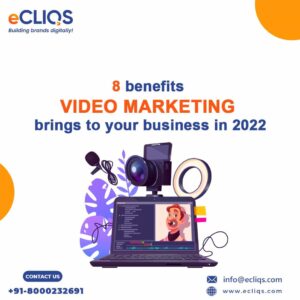
Top 8 Video Marketing Benefits
1. Video Boosts Conversions and Sales
You might potentially make a lot of money using videos. If you include a product video on your landing page, you may expect an 80% increase in conversions(source:saleslion).
If the video’s presenter is convincing enough, they might convince the viewer to become a lead (or a lead to become a customer), rather than just reading the results in the search engine.
It’s possible that playing a video could lead to a purchase. Research conducted by Explain Ninja shows that after watching an explainer-video about a product or service, 74% of viewers went on to make a purchase. Adapt your language to your audience!
2. Your Audience is More Likely to Watch Your Video
Users are more inclined to watch an embedded video. Thus, you will have yet another chance to spread your word.
More frequently than not, you’ll find a video instead of text. Keep in mind who you want to see your marketing video from the beginning.
3. Video Goes Well With Your Email Marketing Campaign
Even if you’re familiar with email marketing, have you ever heard of video email marketing?
There is evidence that including the word “video” in a subject line increases open rates and decreases unsubscribe rates. The remarkable uptick in click-through rate from sending videos via email ranges from 200 to 300 percent(source: Benchmark).
Emails containing videos can be more engaging if they include a compelling CTA and preview image.
Additional ways to tailor your message to a specific viewer include using the person’s first name in the video’s thumbnail and making references to the person’s interests and achievements.
4. Rank Higher in Search
An increase in search engine rankings can be achieved with the use of video. According to a survey conducted by HubSpot, 66% of viewers of branded videos go on to visit the site of the advertiser. This demonstrates how high-quality video content may pique consumer interest and boost site traffic by keeping viewers engaged for longer. Because Google uses clicks and traffic as ranking factors, this is crucial. The more the site’s visibility in SERPs, the greater its share of clicks and traffic.
The advancements in machine learning at Google have allowed the search engine to identify thousands of individual images within a movie. You may organize video content by its keywords using Google’s Video Intelligence API. In terms of search engine optimization, this may be a huge plus.
When it comes to search engine optimization, video also helps because it adapts to multiple screens. Many video hosting sites, including YouTube and Vimeo, optimize their content for mobile devices, allowing you to reach a wider audience.
Google’s ranking system is giving video-heavy webpages a boost. That’s why it’s crucial for companies to incorporate films into their online marketing efforts.
Get the most out of your video marketing campaigns by implementing these search engine optimization strategies for videos.
- Shorter is better when it comes to video length. The most effective length for online videos is under two minutes. Communicating effectively in a short amount of time is essential. A short video of only four minutes will do. However, a major drop in viewership could occur if a video ran too long.
- Take down the dialogue from your video. If you have taken the time to transcribe the audio from your video, you will help the Google crawlers crawl your content more effectively. As a result, more people are likely to find your site through a web search.
- Videos should be optimized. Including titles, descriptions, and meta tags will help search engine spiders better index your movie.
- We can’t stress enough how important high-quality thumbnails are. Click-through rates can be improved by the use of appealing thumbnails to attract the attention of search engine users.
5. Video Builds Trust
Video increases confidence because viewers feel connected to the video’s makers. Your prospect will appreciate the personal touch of a video introduction over a barrage of impersonal emails or phone calls.
Customers can’t buy without quick videos. Recent research by Optinmonster indicates that 90% of mobile video viewers value product videos, leading to a sizable uptick in sales.
Customers will have more faith in you if you provide them with more informative and educational movies. And it gets better; with increased consumer confidence comes a greater likelihood of making sales.
6. Bump Up Social Shares
HubSpot reports that 83% of customers are willing to share your company’s video content with friends and family if it is well received by the intended demographic.
Make entertaining videos that people will want to share on social media. Despite the fact that feelings can’t be quantified, social connections have been shown to increase site visitors and yield even greater results than monetary ones.
7. The Future of Video is Bright
There has been a corresponding increase in our reliance on technological advancements.
This means that you now have more options than ever before for creating video content that will spark your audience’s attention and get them involved with your brand.
To get the most out of your videos, you should give some thought to their potential applications.
Now is a great time to begin creating video content and keeping up with the most recent ways and best practices for disseminating your message to typical internet users, since VR, AR, and streaming services are on the horizon.
8. Reach Decision Makers
Consumers will go out of their way to find videos relating to the goods and services they are interested in. Videos have a greater probability of influencing clients’ purchasing decisions because they educate them and foster a lasting relationship with your target market.
Marketers who used movies shared on social media reported a 90%+ increase in lead conversion rates.
And if both text and video are accessible on the same page on the same topic, 59% of top-level executives say they will watch the video.
Takeaways
Online, on social media, and on mobile devices, video marketing is a potent tool for businesses to connect with customers.
It’s a fantastic medium through which to disseminate data concerning your offering to everyone who could be interested.
After you’ve made your video, you need to get the word out and track its performance so you can tweak and perfect your strategy for future campaigns.
In order to keep their attention, consumers are searching for novel means of interacting with brands online. Offerings that aren’t pleasing to the eye risk being ignored by potential buyers.
Reference
- https://www.videowise.com/blog/the-top-5-benefits-of-video-marketing
- https://www.designrush.com/agency/video-marketing/trends/what-is-video-marketing
- https://www.lumapixel.com/blog/video-marketing-for-business-benefits/
- https://thesocialshepherd.com/blog/video-marketing-benefits
- https://www.dreamgrow.com/8-reasons-why-your-business-should-use-video-marketing/
- https://explain.ninja/blog/20-video-marketing-statistics-2020/
- https://saleslion.io/ecommerce-statistics/using-video-on-landing-pages-can-increase-conversion-by-80/
- https://www.benchmarkemail.com/blog/how-to-increase-your-ctr-by-200-percent-with-video-email/
- https://optinmonster.com/video-marketing-statistics-what-you-must-know/
A Guide to Google’s Performance Max Campaign
With the help of automation and machine intelligence, a new type of Google Ads campaign is here to help your advertising plan succeed. To accomplish these goals without relying on the Google Merchant Centre product feed, the company unveiled Performance Max (PMax) campaigns at Google Marketing Live in 2021.
Since Google said it would expand the Performance Max campaign, many have wondered what it is, how it stacks up against other ads, and how well it actually does. This blog is intended to serve as a resource for marketers by providing information in response to their most pressing queries.

What are Google’s Performance Max campaigns?
Launched for the first time in November of 2021, the Performance Max (or PMax) is a relatively new goal-based campaign type. You may utilise automation and analytics to pinpoint exactly when and where your ads need to appear for a given campaign to achieve its objectives across the full breadth of Google’s ad inventory.
This “one size fits all” campaign type is the latest step by Google to leverage machine learning to gain more control over what your ad looks like, when they will be served, and who they are offered to.
Their fascinating replacement of Smart Shopping advertising is just one example. Smart Shopping emerged in 2018 as an improvement over traditional Shopping campaigns and quickly became a Google recommended practice. This change to PMax should be noted.
Main benefits of Performance Max to plan your campaigns
100% goal-oriented 100% performance: Your marketing plan revolves around your desired outcomes. As the strategy’s focal point, your marketing goals should be front and centre. With the help of AI, you can zero in on the ideal customer for your business and make a lasting impression throughout the whole Google ecosystem, all while staying true to your original goals.
Accelerate results: Google Signals can help you get your campaigns up and running more quickly, allowing you to get better results in less time.
Reporting: A new set of reports will be available on Google Insights, letting you know which of your ads are doing well.
How to setup a Google Ads Performance Max Campaign: Things to Keep in Mind
Now that you know what a Performance Max Campaign is and why it’s employed, we can get into the specifics of how to implement one successfully.
Step 1: Choose Your Goal
The first stage in setting up your campaign is to choose your aim.
Where do you want this campaign to take you? Do you want more leads? Want to increase sales? What, you want even more people to visit your website?
Whatever your aim, ensure you have a clear understanding of what you want to achieve before you go on to the next phase.
Step 2: Choose Your Budget
The next step is to choose your budget.
Do you have a budget in mind for the campaign?
Remember, with a Performance Max Search Campaign, you are likely to notice a higher cost per click, based on your ad scheduling, average daily budget, conversion targets, bidding strategy, machine learning models, campaign type, creative assets, and more factors.
So, you must guarantee that you are willing to invest a bit extra money on your marketing.
Step 3: Choose Your Audience
Selecting your target demographic is the next step.
Who exactly are you hoping to reach with your promotion?
A subset of the population or repeat visitors to your site might be singled out for promotion. Your Google Ads account, previous campaign results, conversion goal guidelines, and other data can all go into making highly targeted Performance Max ads.
Whatever you decide, before you move on to assembling an asset group to house your advertisements, make sure you have a firm grasp on who it is you hope to reach.
Step 4: Choose Your Ad Format
The next thing to do is settle on an advertisement format.
Choose the one that works best for you from among the available alternatives.
You can choose from HTML5, as well as text, images, and videos.
Step 5: Choose Your Keywords
Selecting appropriate keywords is the next stage.
Which specific terms or phrases do you hope to emphasise in your marketing efforts?
Choose keywords that describe your product or service accurately.
Step 6: Set Up Your Campaign
The last thing to do is to initiate the campaign.
Following the acquisition of the aforementioned data, campaign setup can begin.
You’ll need to sign up for a PPC-focused advertising platform to accomplish this.
After signing up, you’ll be able to launch your campaign and begin attracting visitors to your website.
5 Tips to Optimise PMax Campaigns
With Google continuing to automate more and more tasks, there are several factors to consider when working with PMax.
1. Have clear goals
These campaigns are goal-based. Everyone wants to increase sales and revenue, but the algorithm may be optimised if you know how you want the campaigns to fit into the bigger picture of your marketing strategy.
2. Use insights from existing campaigns
Ad scheduling, geo-targeting, bid techniques, and audience indications are all things over which we have some say. You may speed up the algorithm’s learning and better connect with customers by applying what you’ve learnt from previous campaigns as additional barriers.
3. Use all the assets you can
You’ll be providing the AI a better chance of success, the more high-quality assets you can offer it with.
- 5 Headlines
- 5 Long headlines
- 5 Descriptions
- 20 Landscape images
- 20 Square images
- 5 Logos: at least 1 square logo, others are optional
- 5 YouTube videos (not required, min. 10 seconds)
4. Feed optimization
To get the most out of your online advertising budget, fine-tune your feed. As with traditional shopping campaigns, PMax’s targeting will be based on the quality of the product feed.
5. Collect the right data
A reliable data collection system is essential for automation. Feed Google the most accurate information you can find to maximise its effectiveness. You may check that you are doing so in a few different ways.
- Collect data on conversion rates directly from Google using a global site tag.
- Value your conversion actions so you may employ value-based bidding tactics like Target ROAS.
- Putting in place micro conversion steps will provide Google more signals that your users are actively engaged and likely to convert.
- Improved conversions can be set up ahead of time to guarantee correct data collection.
Takeaway
After reading this, you should have a much better idea of whether or not Performance Max Campaigns are the correct campaign type to help you achieve your marketing objectives and goals.
You can put your attention where it really counts by focusing on strategic performance factors like creative optimization, campaign strategy, and insights with this type of automated campaign. The more original resources you give machine learning, the better it will perform.
References
- https://www.adlucent.com/resources/blog/what-are-googles-automated-performance-max-campaigns/
- https://searchengineland.com/performance-max-campaigns-set-up-386684
- https://www.practicalecommerce.com/setting-up-googles-performance-max-campaigns
- https://www.wordstream.com/blog/ws/2022/07/05/performance-max-tips
- https://www.adsmurai.com/en/articles/max-campaigns-google-ads?hs_amp=true
8 Tips for LinkedIn Marketing
B2B marketers can find the greatest pool of qualified prospects on LinkedIn, which has more than 882 million members (source: businessofapps.com). If you aren’t already using the platform, or aren’t using it to its full potential, you should think again. Successful LinkedIn marketing may do wonders for your professional reputation and, in the long run, your company’s bottom line.
Whether you’re trying to promote your business or yourself, you’ll find some helpful hints in this piece. Let’s get started.
What is LinkedIn Marketing?
Marketing on LinkedIn refers to the promotion of a business or brand through the use of the LinkedIn website. The ability to divide potential customers into distinct groups makes it useful as a marketing tool as well. According to omnicore, among LinkedIn’s 87 million young professionals, 11 million are in leadership roles.
It’s a great way for people and businesses to find each other who share common interests. In other words, if you haven’t already begun Marketing on LinkedIn, now is the time to do it.
Why is LinkedIn Marketing important?
Is there a point in even marketing on LinkedIn? It’s possible that this is the very first thing you’re considering. It’s reasonable to be wary about investing time and energy into a system that won’t provide dividends. Therefore, let’s take a quick look at why marketing on LinkedIn is beneficial:
- 45% of marketers say LinkedIn has aided them in expanding their clientele(source:bluecorona).
- Sproutsocial says that the number of leads it generates is 277 percent higher than Facebook’s.
- According to Kinsta, a whopping 80% of all B2B leads originate on LinkedIn.
- Additionally, it is the main source of social traffic for B2B websites, making up almost half of all visits.
- 91% of C-suite executives say LinkedIn is their go-to for business-related news and insights(source:foundationinc).
Just a few of the numerous compelling arguments that can be made for prioritising LinkedIn marketing and enhancing any existing approach.
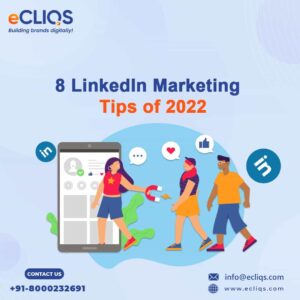
Check out these 8 tips for LinkedIn marketing that will help you grow your business reach in 2022.
1. Optimise your profile
Although this is the first thing that comes to mind, it is often neglected in favour of more complex LinkedIn marketing strategies. Marketing on social media requires optimising your profiles in order to stand out from the crowd, whether you’re using a business page or your own personal account.
Create a professional profile image that represents your brand. According to LinkedIn, with an accompanying photo, you may expect a whopping 21 times as many profile views. Profile pictures for personal profiles should be high-resolution professional headshots, while company pages can include the brand logo. However, this could change based on your specific business and brand.
Including your current job title on your LinkedIn profile can increase the number of connection requests you receive by as much as fivefold. Include at least five pertinent talents; doing so has been shown to increase the number of messages you receive from recruiters and other LinkedIn members by 31 times!
2. Publish content that adds value
LinkedIn marketing is less about making salesy promotional messages and more about making a positive impact on the lives of your target audience. In fact, 88% of the best-performing content marketers are B2B professionals who prioritise the informational demands of their target audience.
Therefore, you should utilise LinkedIn to produce, disseminate, and publish information that serves a purpose, be it to instruct, inform, direct, inspire, or entertain its readers. Because of this, there is a greater possibility that your target audience will interact with your material and develop an affinity for you or your business.
And if they interact with it, it might well show up in the feeds of their connections, too, which is a great way to spread the word and get more eyes on your post.
3. Get your employees involved
The purpose of LinkedIn is to broaden your professional network. Employees are the most trustworthy brand evangelists, thus they can help you significantly increase your visibility and improve your connections on the platform. This means that your staff must actively participate in your LinkedIn marketing plan.
Instruct workers to include your business in their online profiles. This converts them to instant followers and raises your brand’s profile on the site. In addition, your staff will have an easier time participating in corporate updates and spreading the word to their own social networks. They can talk about your company in the media, in articles, or in roundup postings.
You could also urge some of your best workers to join and actively contribute to relevant LinkedIn Groups in order to position themselves as subject-matter experts in their chosen fields. Groups on LinkedIn are special pages where people with similar professional or personal interests may connect with one another.
In light of this data, it may be time to launch a LinkedIn-based employee advocacy programme at your company. Inspire your staff to spread the word by sharing relevant content, showcasing achievements, and spreading the word. When done properly, setting goals and a strategy for employee advocacy can help your company gain a wider audience.
4. Send out personalised InMail
With the same spirit of encouraging staff participation in LinkedIn marketing, you might want to go things further by sending out personalised InMail. Even if you can’t use this function through your company’s LinkedIn page, you can use it to benefit from the knowledge of other employees with a Premium account.
Therefore, whether a salesperson or recruiter is trying to get in touch with potential clients or make connections with key people, sending them an InMail can often do the work. Being more tailored to the individual increases the likelihood of a response. In fact LinkedIn says that the response rate for LinkedIn InMail is three times that of ordinary emails.
Because of this, it is excellent for reaching out to potential customers who are likely to be interested in what you have to offer. Use the recipient’s information to tailor promotions, content, and service updates to their specific interests.
Think of this as a fantastic opportunity to introduce yourself to prominent users of the service and begin forming meaningful relationships with them. To increase the likelihood that they accept your connection request, you might include a personalised InMail with your request.
Additional capabilities, such as in-built analytics, are available to Premium account holders in addition to InMail. This allows them to better understand the efficacy of various message types and optimise their own campaigns accordingly.
5. Run ads using the Matched Audiences feature
Ad targeting based on user interests is another successful LinkedIn marketing tactic. Through your existing account or email contacts, you can retarget people who have visited your website using the Matched Audiences tool.
There is a better probability of converting these individuals because they are already aware of your business or personal brand. Most customers won’t convert on their first interaction with your business, therefore this feature is really helpful for your LinkedIn advertising efforts. However, if you retarget them, you can subtly bring their attention back to you and encourage them to join your cause.
6. Use rich media to create a bigger impact
Even though LinkedIn is a professional network, you shouldn’t limit yourself to just writing status updates. Visual components, like photographs and videos, can help you attract your desired audience on LinkedIn in the same way that they do on other social media platforms.
By increasing engagement with your posts, bespoke photos can increase your reach and effectiveness by a factor of two, says LinkedIn. Plus, video increases your engagement rate by five times, so it should definitely be a component of your LinkedIn marketing approach. The most amazing figure is the 25-fold increase in engagement you can achieve with live video.
If you want your LinkedIn marketing to have the most possible impact, you should think about incorporating rich media content. This is true of both natural and artificial methods.
Don’t be shy about using comics and illustrated stories if they aid in conveying your story’s message.
7. Feed your efforts with analytics data
Last but not least, it’s essential that you complete your homework before diving headfirst into LinkedIn advertising. If you don’t have a plan, you could squander a lot of time and energy publishing hundreds of meaningless pieces. You may get a comprehensive view of your posts’ performance using LinkedIn’s built-in analytics data. If there is room for improvement, you should frequently review your performance statistics.
8. Create showcase pages
A Showcase Page is an expansion of your Company Page that operates in a manner that is quite similar to that of the Company Page. Showcase Pages are meant to draw attention to a certain facet of your company, such as your most popular item, an individual service, or a sub-brand. Users of LinkedIn have the ability to follow your Display Pages in the same manner in which they follow your Business Profile.
Conclusion
With the correct approach, LinkedIn has the potential to become a tremendous engagement hub for businesses as well as independent business owners. You should be able to have a better sense of how to ramp up your LinkedIn marketing efforts by reading the advice that we have provided above.
However, you must keep in mind that the first step is to focus on the appropriate audience. If you are unable to communicate with the appropriate demographic, none of these pointers will have the kind of effect you were hoping for.
References
- https://sproutsocial.com/insights/social-media-statistics/
- https://www.omnicoreagency.com/linkedin-statistics/
- https://iide.co/blog/top-linkedin-marketing-strategies/
- https://www.bluecorona.com/blog/b2b-marketing-statistics/
- https://kinsta.com/blog/linkedin-statistics/
- https://foundationinc.co/lab/b2b-marketing-linkedin-stats/
- https://blog.linkedin.com/2016/05/25/get-comfortable-with-being-uncomfortable-why-now-is-the-time-to
- https://www.socialchamp.io/blog/linkedin-marketing-strategy/

